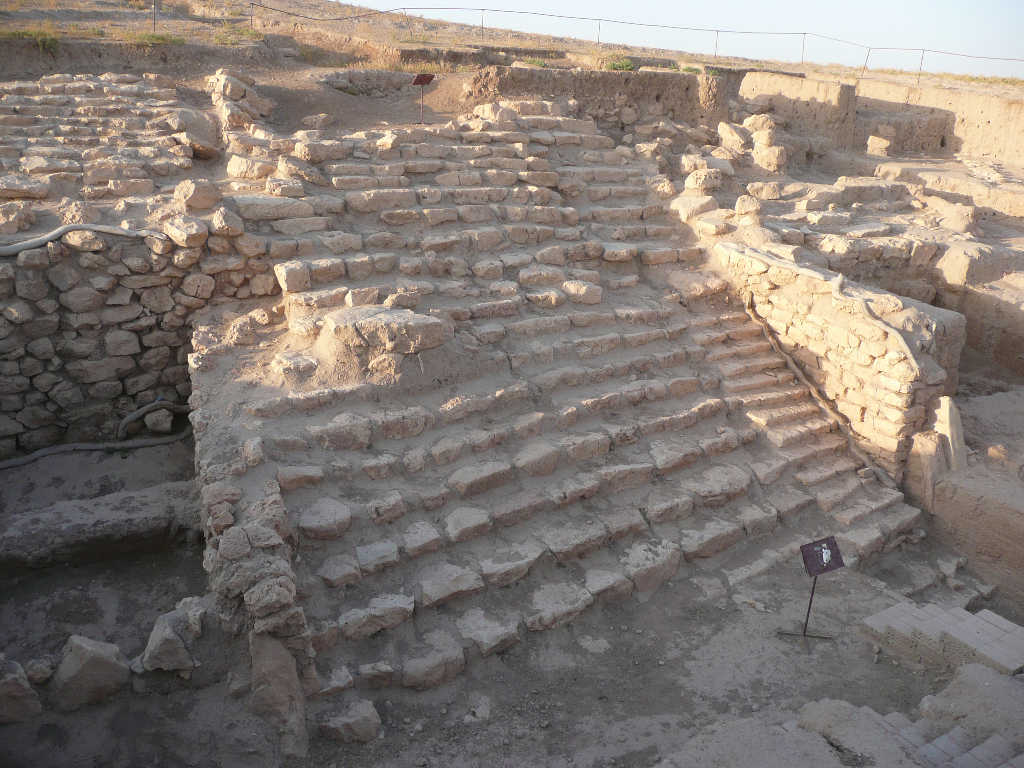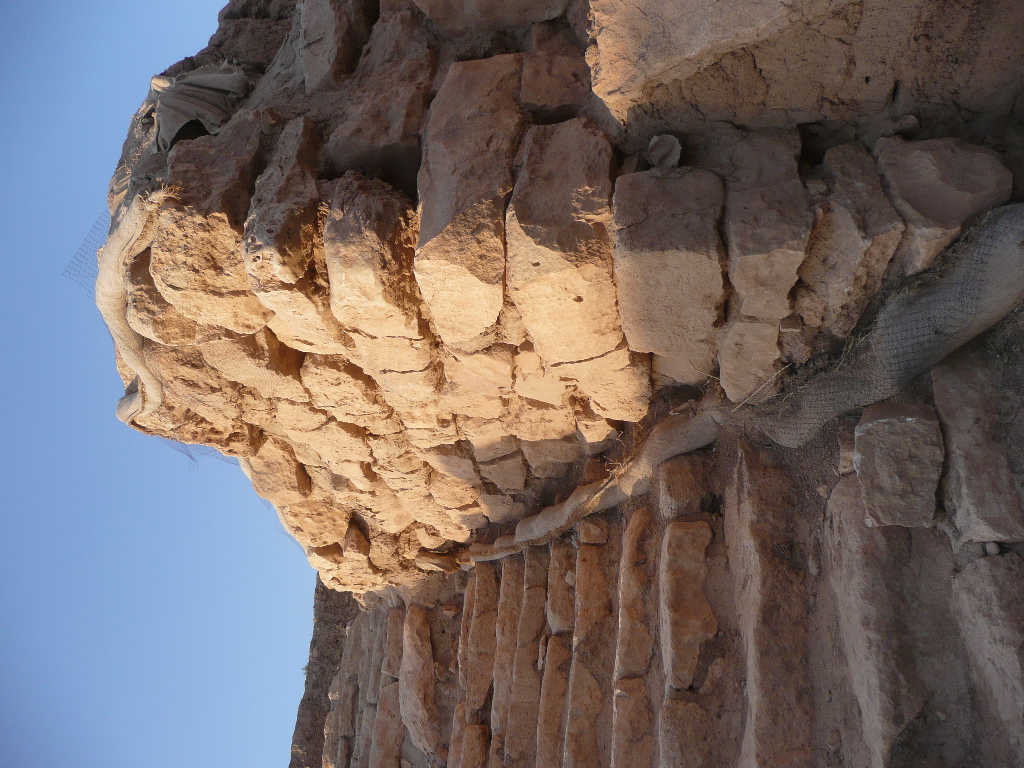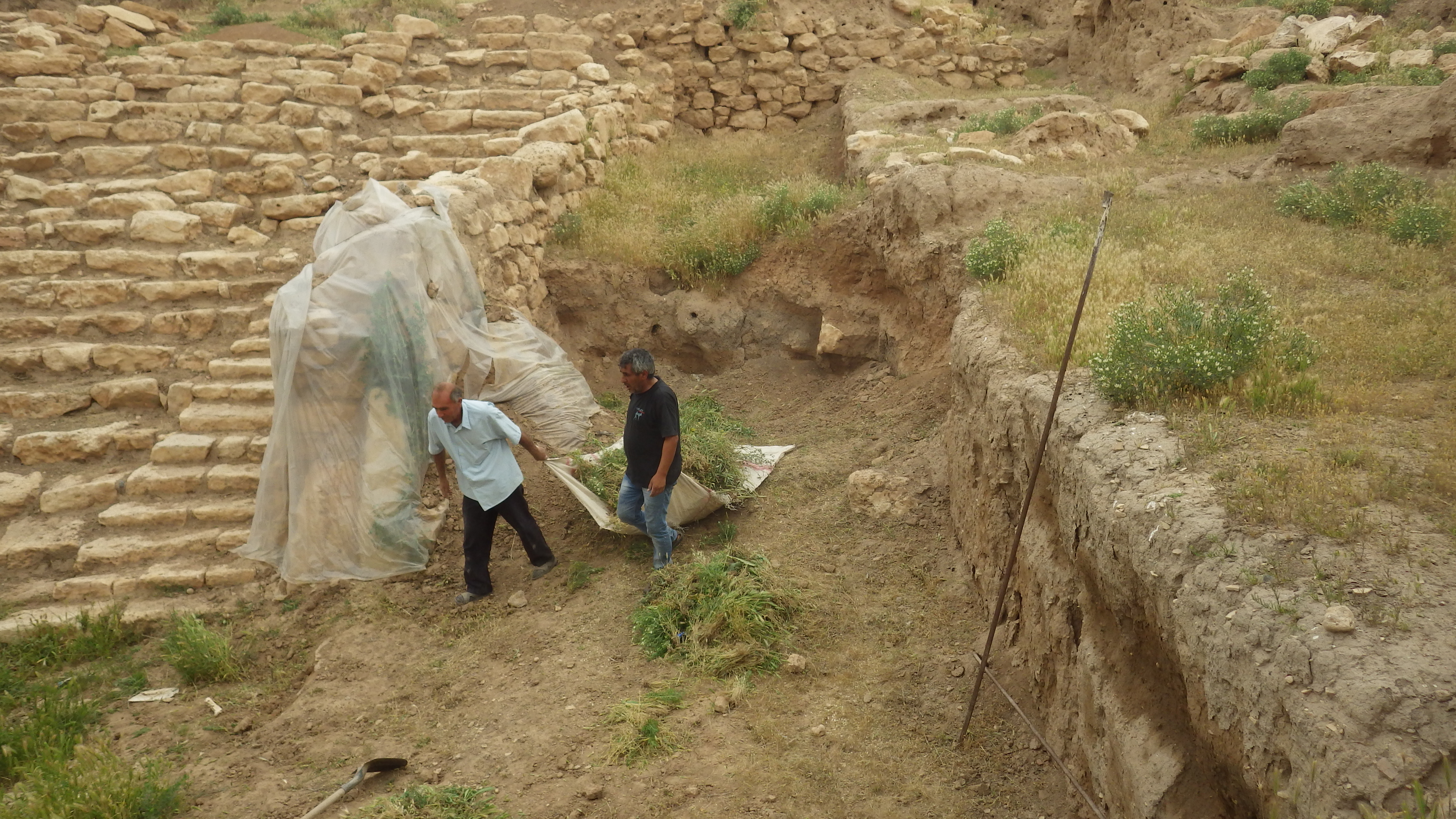Back to top: Conservation activities of the stone architecture
Stone walls
Stone structures are susceptible to damage in the joints, which generally consist of mud mortar, and if exposed, the mud can be washed away through heavy rain or damaged by animals digging their burrows within the joints. Another source of damage is plant roots. During the winter, when it rains heavily, plants can grow between the stones. If the mud mortar is damaged, the stones could become displaced and the entire wall will become unstable. In J6, two large stone walls are exposed. The first is the eastern flank wall of the monumental staircase in J2, the second is the revetment wall.
|
|

|
At its highest, the staircase flank wall is 3.80m high and freestanding, making it susceptible to damage on both sides. The joint between staircase and wall is protected by 'sausages', which are long sleeves made of tent material and filled with dirt from the excavations. The top of the wall is covered with a tarp and a mud plaster coating.
|
|

|
|
The eastern side of the staircase flank wall was exposed up to the base. At the end of the 2010 excavations, this side was backfilled, in order to protect its base. The grass is removed every year to prevent the plant rooths from damaging the joints of the walls. This procedure is carried out across the entire site of Tell Mozan, even during wartime. A plastic tent protects the wall during the winter.
|
|

|